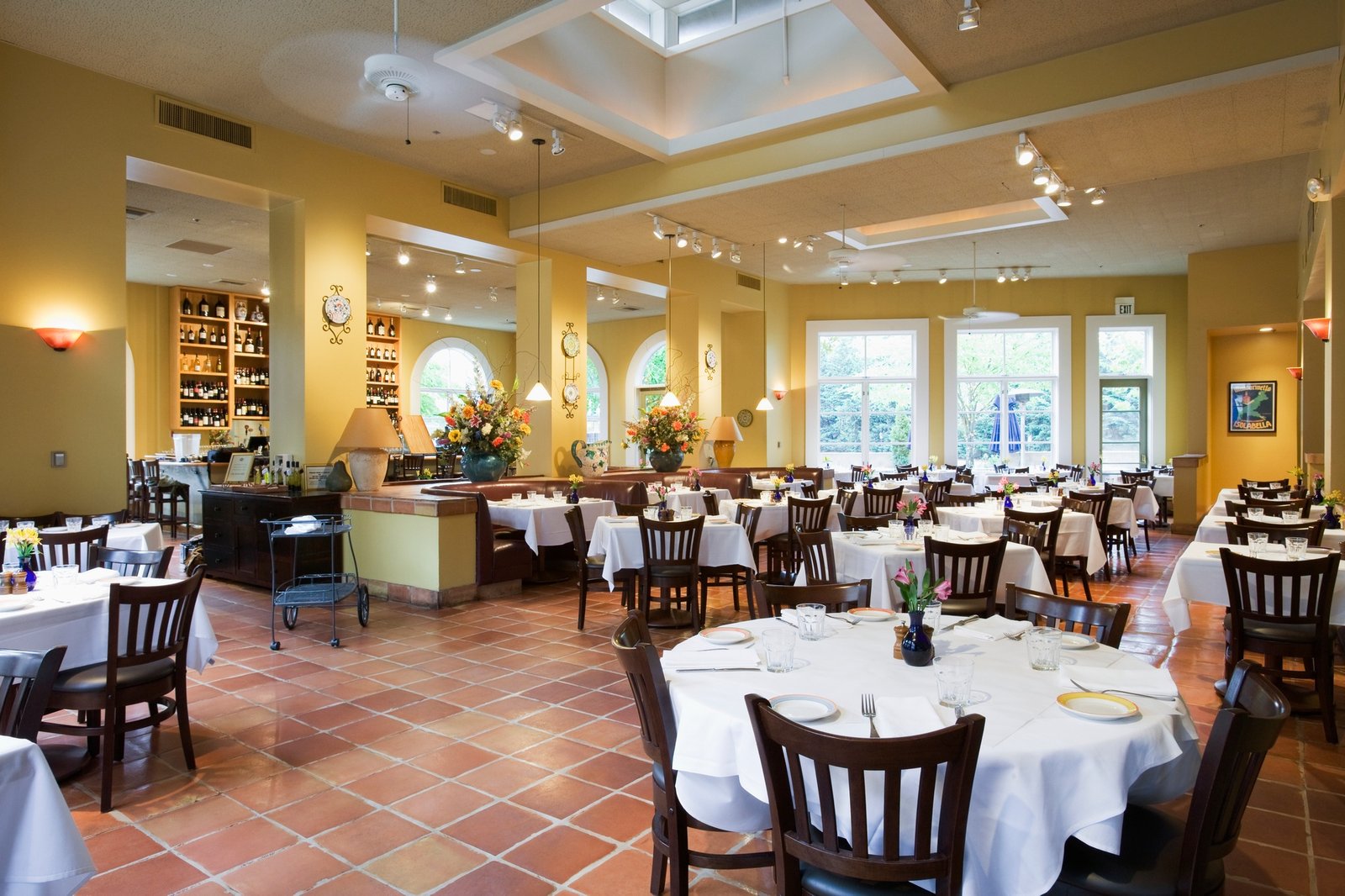Introduction
The landscape of restaurant marketing is rapidly evolving, necessitating that restaurant owners adapt their strategies to remain competitive. In 2025, the fusion of web design and effective marketing strategies will be vital for restaurants aiming to thrive in an increasingly digital world. This article explores the key elements of restaurant marketing, the importance of online ordering, the significance of branding, and the role of innovative technologies in shaping customer experiences. By understanding these components, restaurant owners can better navigate the complexities of modern marketing.
The Evolution of Restaurant Marketing
Historical Context
Restaurant marketing has transformed dramatically over the years. In the past, promotional efforts primarily consisted of print advertisements and word-of-mouth recommendations. Traditional marketing avenues included local newspapers, flyers, and radio ads, which were often limited in reach and effectiveness. As technology advanced, the advent of the internet opened up new channels for marketing, enabling restaurants to connect with a broader audience through websites and email newsletters.
With the rise of social media in the early 2000s, restaurants began leveraging platforms such as Facebook and Instagram to promote their offerings. This shift allowed for direct engagement with customers, providing an opportunity to showcase menu items, share customer experiences, and build a loyal community. As we move into 2025, the importance of a cohesive online presence is more critical than ever, with digital marketing strategies becoming a cornerstone of successful restaurant operations.
Current Trends in 2025
As of 2025, several trends are shaping the restaurant marketing landscape. Increased focus on sustainability, health-conscious dining, and unique culinary experiences are driving consumer preferences. Restaurants are now utilizing digital platforms to convey their brand values, such as sourcing local ingredients and minimizing waste. Additionally, the integration of online ordering and delivery services has become a standard expectation among consumers. The COVID-19 pandemic further accelerated these trends, reinforcing the need for restaurants to adapt to an ever-changing environment.
Moreover, personalized marketing is becoming a prevalent strategy, with restaurants using data analytics to tailor their promotions to individual customer preferences. This trend indicates a shift towards more engaging and relevant marketing efforts, which can significantly enhance customer satisfaction and loyalty.
The Importance of Online Ordering
Consumer Demand for Convenience
In today’s fast-paced world, consumer demand for convenience is at an all-time high. Online ordering has emerged as a vital aspect of restaurant operations, allowing customers to place orders quickly and easily from their devices. Studies show that restaurants offering online ordering have seen increased sales and customer retention rates, as consumers appreciate the ability to customize their orders and avoid long wait times.
The demand for seamless online ordering experiences has reshaped how restaurants interact with their customers. With the growth of delivery services like DoorDash and Uber Eats, restaurants must ensure their online ordering systems are user-friendly and efficient, catering to the expectations of a modern clientele. Additionally, the convenience of online ordering contributes to higher average order values, as customers are more likely to add items when ordering digitally.
Integrating Online Ordering Systems
To maximize the benefits of online ordering, restaurants need to implement robust ordering systems that are easy to navigate. This includes developing responsive websites and mobile apps that streamline the ordering process. Key features should include clear menu displays, customization options, and secure payment processing to enhance user experience and build customer trust.
Integrating these systems with existing point-of-sale (POS) systems is also crucial for efficient order management and inventory tracking. By synchronizing online and offline operations, restaurants can minimize errors, reduce waste, and provide a consistent customer experience across all platforms.
Enhancing Customer Experience
The online ordering experience should not only be functional but also engaging. Incorporating elements such as personalized recommendations, loyalty programs, and interactive features can significantly improve customer satisfaction. For instance, utilizing customer data to suggest popular dishes or offering discounts for repeat orders can encourage customer loyalty.
Feedback mechanisms, such as rating systems and customer reviews, can also enhance the online ordering experience. By actively seeking and responding to customer feedback, restaurants can demonstrate that they value their customers’ opinions, fostering a sense of community and trust.
Branding and Visual Identity
Creating a Memorable Website
Your restaurant’s website serves as its digital storefront, making a strong first impression crucial. A well-designed website should reflect the restaurant’s brand identity and values. Elements such as color schemes, typography, and imagery should align with the overall theme of the establishment, creating a cohesive brand image.
Incorporating high-quality photographs of menu items, the dining environment, and staff can enhance visual appeal and entice potential customers. Clear navigation, informative content, and easy access to essential features, such as reservation systems and menus, are vital for providing a positive user experience. A memorable website not only attracts customers but also reinforces brand loyalty by creating a lasting impression.
Utilizing Visual Storytelling
Visual storytelling is an effective marketing strategy for restaurants, allowing them to showcase their unique offerings and brand narrative. By crafting compelling stories around their food, ingredients, and service, restaurants can connect with customers on an emotional level. This approach not only engages visitors but also encourages them to share their experiences on social media, expanding brand reach.
Incorporating videos, behind-the-scenes content, and customer testimonials can further enhance the storytelling aspect. These elements help humanize the brand and establish a stronger connection with potential customers, differentiating the restaurant from competitors.
Search Engine Optimization (SEO) Strategies
Local SEO for Restaurants
Search Engine Optimization (SEO) is essential for enhancing a restaurant’s online visibility. Local SEO, in particular, is a critical component, as most customers search for dining options in their vicinity. Implementing local SEO strategies includes optimizing the website with location-based keywords, ensuring the restaurant’s information is accurate on Google My Business, and encouraging customer reviews.
Additionally, leveraging local backlinks from food blogs and city guides can improve search rankings. A focused local SEO strategy ensures that the restaurant appears prominently in search results, driving more traffic to its website and increasing foot traffic to its physical location.
Content Marketing Techniques
Content marketing is another powerful tool for restaurants to connect with their audience. Developing a blog on the restaurant’s website that features recipes, cooking tips, and behind-the-scenes stories can engage customers and improve SEO. Regularly updated content not only attracts visitors but also establishes the restaurant as an authority in the culinary space.
Furthermore, utilizing social media platforms to share blog posts, special promotions, and events can increase reach and engagement. By providing valuable content, restaurants can foster a deeper relationship with their customers, encouraging repeat visits and word-of-mouth referrals.
Social Media Engagement
Building a Community Online
Social media platforms are essential for building a community around a restaurant brand. Engaging with customers through platforms like Instagram, Facebook, and Twitter allows restaurants to share updates, promotions, and stories, creating a sense of connection and loyalty. Regularly posting visually appealing content, such as food photos and customer experiences, encourages followers to interact with the brand.
Hosting contests, polls, and Q&A sessions can further enhance engagement, allowing customers to feel more involved in the brand. By fostering a vibrant online community, restaurants can turn their followers into loyal customers and brand advocates.
Leveraging User-Generated Content
User-generated content (UGC) is a valuable asset for restaurant marketing. Encouraging customers to share their dining experiences on social media not only provides authentic reviews but also expands the restaurant’s reach. Restaurants can incentivize UGC by offering discounts or featuring customer photos on their official profiles.
Sharing UGC not only showcases the restaurant’s popularity but also creates a sense of community among patrons. By highlighting real customers and their experiences, restaurants can build trust and authenticity, making them more appealing to potential visitors.
The Role of Mobile Responsiveness
Importance of Mobile-Friendly Design
With an increasing number of consumers using mobile devices to browse and order food, a mobile-friendly website is no longer optional; it is a necessity. Mobile-responsive design ensures that the restaurant’s website functions seamlessly across various devices, providing an optimal user experience regardless of screen size.
A mobile-friendly site typically features simplified navigation, fast loading times, and touch-friendly elements that enhance usability. Ensuring that customers can easily access menus, make reservations, and place orders from their mobile devices can significantly increase conversion rates and overall customer satisfaction.
Impact on Consumer Behavior
The shift towards mobile usage has fundamentally changed consumer behavior. Customers are more likely to research dining options, look up menus, and read reviews on their phones before making a decision. Restaurants that prioritize mobile responsiveness can capture this audience effectively, resulting in increased foot traffic and online orders.
Moreover, mobile optimization positively impacts search engine rankings, making it easier for potential customers to discover the restaurant through search engines. A failure to address mobile usability can lead to increased bounce rates and lost opportunities.
Innovative Marketing Technologies
Utilizing AI and Chatbots
Artificial intelligence (AI) and chatbots are becoming increasingly integrated into restaurant marketing strategies. These technologies can enhance customer interactions by providing instant responses to inquiries, assisting with reservations, and even offering personalized recommendations based on past orders.
AI-driven data analytics can also empower restaurant owners by providing insights into customer preferences and trends. By analyzing this data, restaurants can tailor their marketing strategies and menu offerings to better meet the desires of their clientele, ultimately driving sales and enhancing customer satisfaction.
Data Analytics for Targeted Marketing
The utilization of data analytics allows restaurants to develop targeted marketing campaigns that resonate with specific customer segments. By analyzing customer behavior, preferences, and demographics, restaurants can create personalized promotions and communications that are more likely to engage their audience.
For instance, restaurants can segment their email lists based on customer purchase history to send tailored offers, encouraging repeat visits and increasing customer loyalty. This data-driven approach not only optimizes marketing spend but also fosters meaningful connections with customers.
Conclusion
The intertwining of web design and marketing is essential for restaurants aiming to thrive in 2025. By embracing online ordering, focusing on branding, optimizing for search engines, engaging on social media, and adopting innovative technologies, restaurants can create compelling customer experiences that drive loyalty and sales. As the restaurant industry continues to evolve, those who adapt to these changes will be better positioned for success.
FAQs
What are the key elements of effective restaurant marketing?
Effective restaurant marketing includes a strong online presence, a user-friendly website, engagement on social media, targeted advertising, and excellent customer service.
How important is online ordering for restaurants?
Online ordering is crucial as it meets consumer demand for convenience, increases average order values, and enhances customer satisfaction.
What role does branding play in restaurant marketing?
Branding helps create a memorable identity that differentiates a restaurant from competitors, attracting and retaining customers through visual storytelling and cohesive marketing efforts.
How can restaurants optimize their websites for mobile users?
Restaurants can optimize their websites by ensuring responsive design, quick loading times, and easy navigation tailored for mobile devices.
What technologies can restaurants use for marketing?
Restaurants can leverage AI, chatbots, and data analytics to enhance customer engagement, personalize marketing efforts, and streamline operations.



